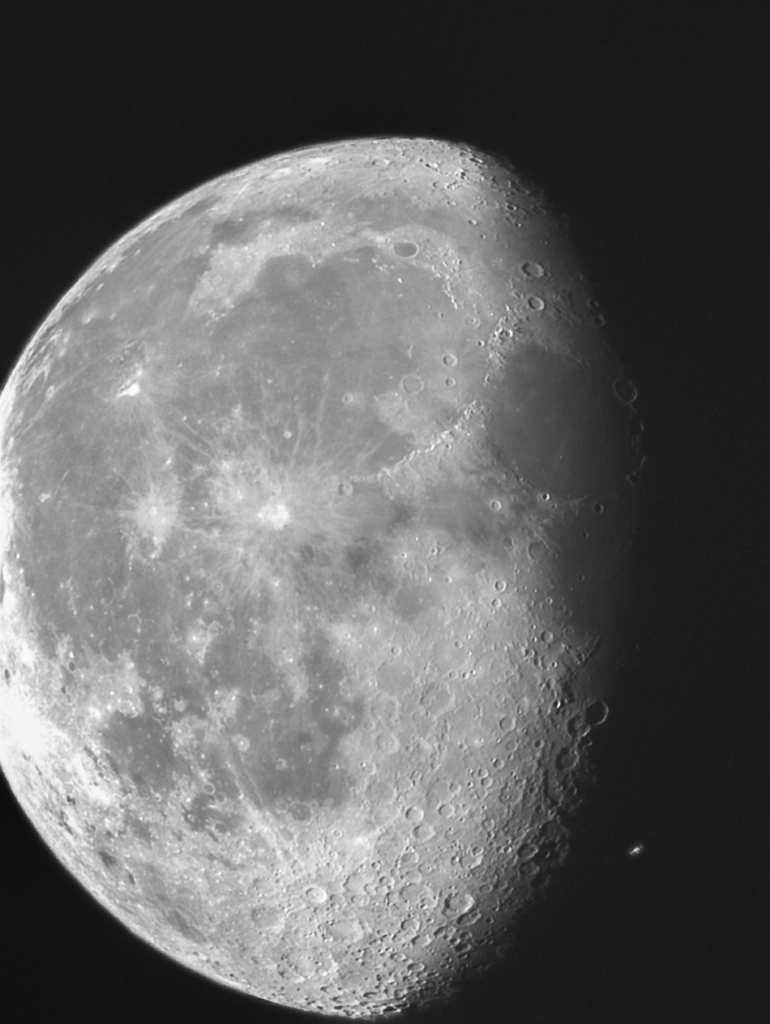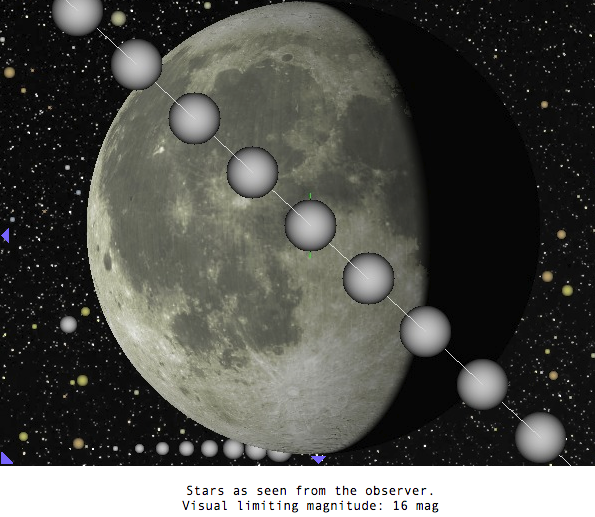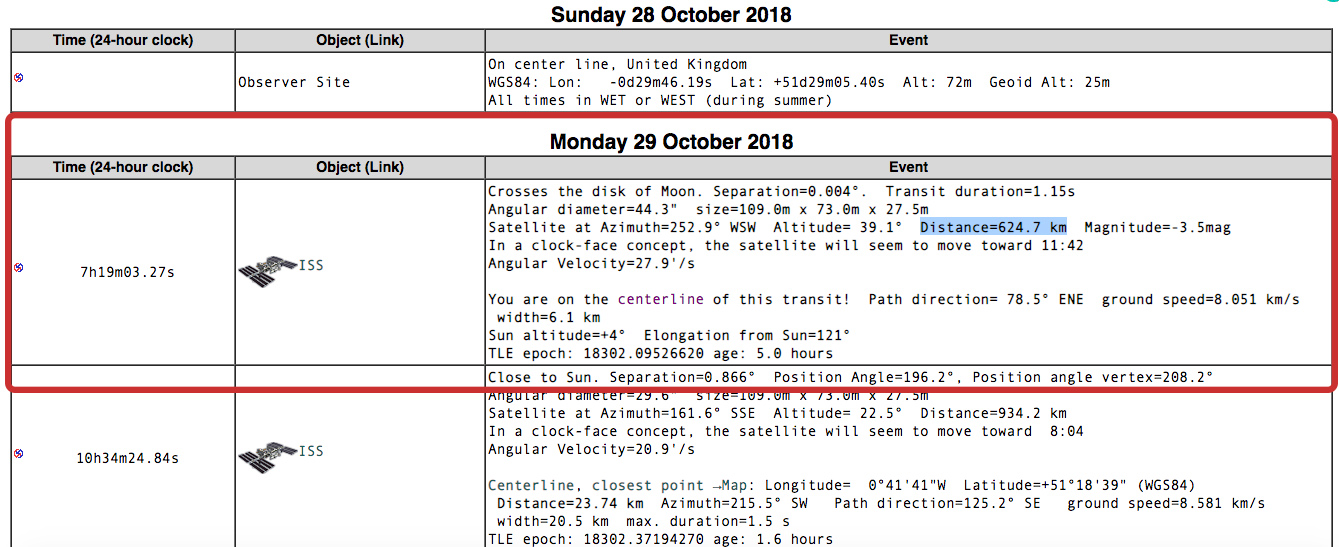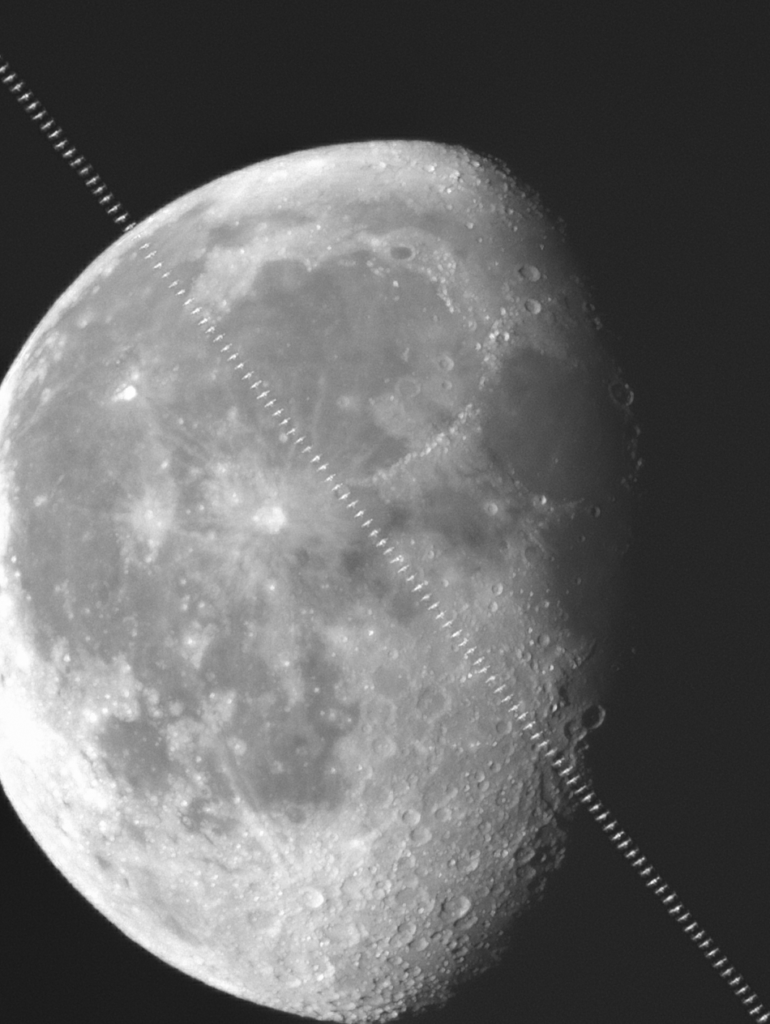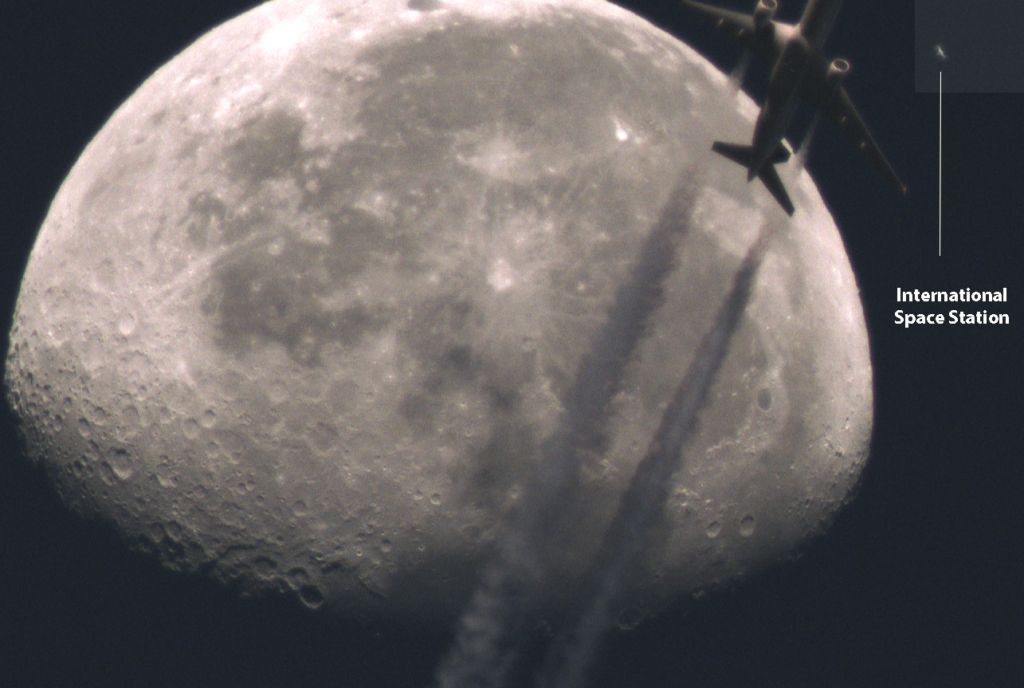ISS Lunar transit – test of my new 72/420 ED refractor
A wonderful autumn morning with a promising International Space Station (ISS) lunar transit prediction. During the transit Moon was at an elevation of a bit over 39° above horizon, the predicted distance was 624.7 km from my location and visual magnitude of ISS was -3.5. Not extremely ideal, but close enough to have a decent result eventually. The apparent size of the International Space Station at transit was 44.3 arc-second. I am convinced that my 10″ scope could have revealed much more finer details on ISS, but I was at work and it was lucky enough to even have the opportunity to give imaging a try. The only way I could do that if I took my small size telescope with me.
Moon was 76.3% illuminated and the sky was getting brighter as it all happened about 35 minutes after sunrise. The transit was due to happen a few seconds after 7:19am. This occasion was meant to be a test, namely the test of my new toy – a Skywatcher 72/420 ED Apo refractor. At this time I wanted to find out its performance capability during an ISS lunar transit.
Must admin that I probably stayed on the safe side, maybe being too conservative with magnification… The use of my TeleVue 2.5x powermate was seriously considered, but this was my very first test on an ISS transit with this scope and really wanted to see how it works at prime focus first. So powermate was left out of the equation this time around and used my Zwo ASI224MC colour camera in prime focus.
I think it performed very well, Moon looks amazing and the ISS frames were nice and tidy too. The photo at the top of this post is a composite one. The Moon frames from the transit video are stacked in Autostakkert 2 and combined with one frame having ISS on it before enters the lunar disk. This way both objects are at their best, sharp and clean from noise! The reason for missing out a bit of Moon is my field of view. I certainly did want to capture as many ISS frames near the Moon as possible, so this is the result of a compromise.
The next composite photo is a bit different, you can see all the frames of ISS in one shot. Sadly I could not combine the frames as well as the composite above. For the sake of all the captured frames visible on one photo I had to sacrifice the crispness/sharpness of the lunar surface, nowhere near as detailed as above.
But before it all happened an unexpected surprise happened, a lovely United Airlines Boeing 777 just did a lunar transit too. It was amazing! So here is a video summary about the whole event, this time I appreciate the video footage over the still shots.
I would like to dedicate this video for the Flat Earth Society! I hear it all the time from them: ” Oh it must be a U2 bomber or some kind of airplane, maybe a balloon but definitely not ISS, the International Fake Station does not exist!” Well I have a bad news for them, it does exist as you can see all my photos on this website. You can predict when it will appear, its apparent size, brightness etc. But if anybody from them thinks differently, I will allow them to prove! me wrong. I am sorry, but calling it fake, CGI or hologram will not do the job. I am investing quite some time to my images, videos, writing posts and document it as detailed as I possibly can. Now it is your turn, prove it to me that it is fake! And I need facts please….
So I made a little comparison of the two objects. Both transit footages were recorded with exactly the same equipment, at the exact same magnification 15 minutes apart from each other. The United Airlines Boeing 777 was travelling at an altitude of 39,000 feet or 11.88 km. This is its altitude, a distance this airplane flying above Earth or to put it simple the distance if it would fly right above me (at a 90° angle). But because it crossed the Moon which was at 39° above horizon, the distance must have been around 15-20 km from my location. Compared to ISS which was at 625 km of a distance.
The size of the two objects are not that different, ISS (width 108.8) compared to Boeing 777 (length 73.9 m) is quite similar. The only difference is the distance, therefore their apparent sizes are quite different too. If I compare them ISS only as large as one jet engine.
Equipment
Skywatcher 72/420 ED Apo refractor telescope
Zwo ASI224MC colour camera
29/10/2018
